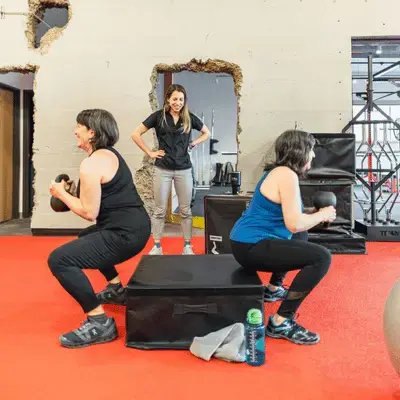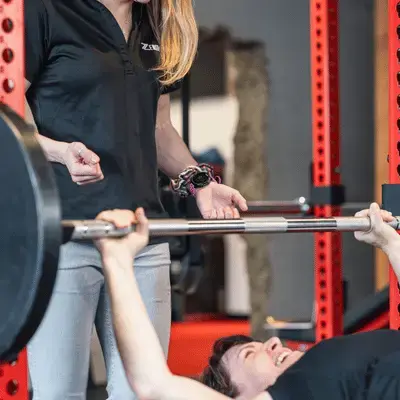Stronger With Age: Science-Backed Strength Training for Aging Adults
- Jesse Klein

- Jun 30
- 3 min read
Updated: Sep 6
You’re not broken, your body is adapting. Aging isn’t a decline, it’s a shifting landscape. With smart strength training, you can build muscle, reduce pain, and improve how you move- even into your 60s, 70s, and beyond.
At Zenith Performance and Wellness in Eugene, we work with athletes and every day adults of all ages to build long-term strength and resilience. This post shares the science behind strength training for aging adults and how to train smart for the long game.
Start Your Movement Blueprint
Just $99 — 2 strength training consults + 2 weeks small group training (4 sessions). Join our Small Group Training program in Eugene, sign-up for the Blueprint experience.
The Physiology of Aging and the Power of Strength
After age 30, we naturally begin to lose 3–8% of our muscle mass per decade if we’re inactive, a condition called sarcopenia. This process accelerates after 60, especially in the fast-twitch (Type II) muscle fibers that give us power, balance, and quickness.
But the good news? Strength training can reverse this decline.
In fact, studies show that older adults who lift weights can increase muscle size, strength, and mobility; often more dramatically than expected. Resistance training in older adults has been shown to significantly improve strength, power, and overall physical function. (Peterson et al., 2010; ACSM, 2019)
"The loss of muscle mass with age is not inevitable. It’s reversible." -Frontera WR, et al. (2000)
Benefits of Strength Training for Aging Athletes
Whether you're still competing, staying active on the trails, or getting back into training after a long break, the benefits of strength training are clear:
✅ Improved joint stability and resilience
✅ Better balance and reduced fall risk (Sherrington et al., 2019)
✅ Improved insulin sensitivity and metabolic health (ACSM, 2019)
✅ Boosted cognitive function and mental clarity (Liu-Ambrose et al., 2020)
✅ Increased energy and faster recovery from activity
At Zenith, we design programs to support aging adults and athletes at any stage, whether you’re recovering from injury, preventing the next one, or chasing a personal record.
What the Science Says: It’s Never Too Late
Strength training doesn’t just slow down decline, it builds new potential. Consider these findings:
A group of adults in their 70s increased strength by 113% in just 12 weeks of progressive resistance training. (Fiatarone et al., JAMA, 1990)
Resistance training boosts BDNF, a key brain-growth factor linked to memory and mental sharpness (Liu-Ambrose et al., 2020)
Postmenopausal women who strength train increase bone mineral density, reducing osteoporosis risk (Layne & Nelson, 1999)
Greater muscle strength is associated with lower all-cause mortality in older adults (Volaklis et al., BMJ Open, 2022)
The aging adult isn’t fragile... they’re adaptable.
Where to Start: Strength Training for Aging Adults
Strength at any age should be progressive, intentional, and personal. Here’s how we help:
Initial Evaluation with a Doctor of Physical Therapy or
Take the first step with our $99 Movement Blueprint
Program Matching: Personal training, small group strength, or hybrid plans
Tools You’ll Use: Dumbbells, barbells, kettlebells, resistance bands, TRX, and bodyweight
Recovery Support: Mobility sessions, compression therapy, and guidance on rest
Our $99 Movement Blueprint — a 3-week signature program designed to help you build strength, confidence, and resilience. Includes 2 personal training consults and 4 small group sessions with expert coaching in a supportive community.”
Whether you train 2x/week in our strength classes or work one-on-one, we tailor your path based on where you are now, not where you used to be.
👉 Take our "Find Your Fit" quiz to to find the right service for you (or reach out via phone or chat to ask us questions directly).
Stronger With Every Decade
You don’t need to lift like you did in your 20s. You just need to lift- consistently, safely, and have the right tools and resources to optimize your hard work.
At Zenith, we help aging adults and active individuals, and athletes rebuild strength, move better, and live with more energy at every stage of life.
📅 Book a free PT consultation or start your $99 Movement Blueprint.







Comments